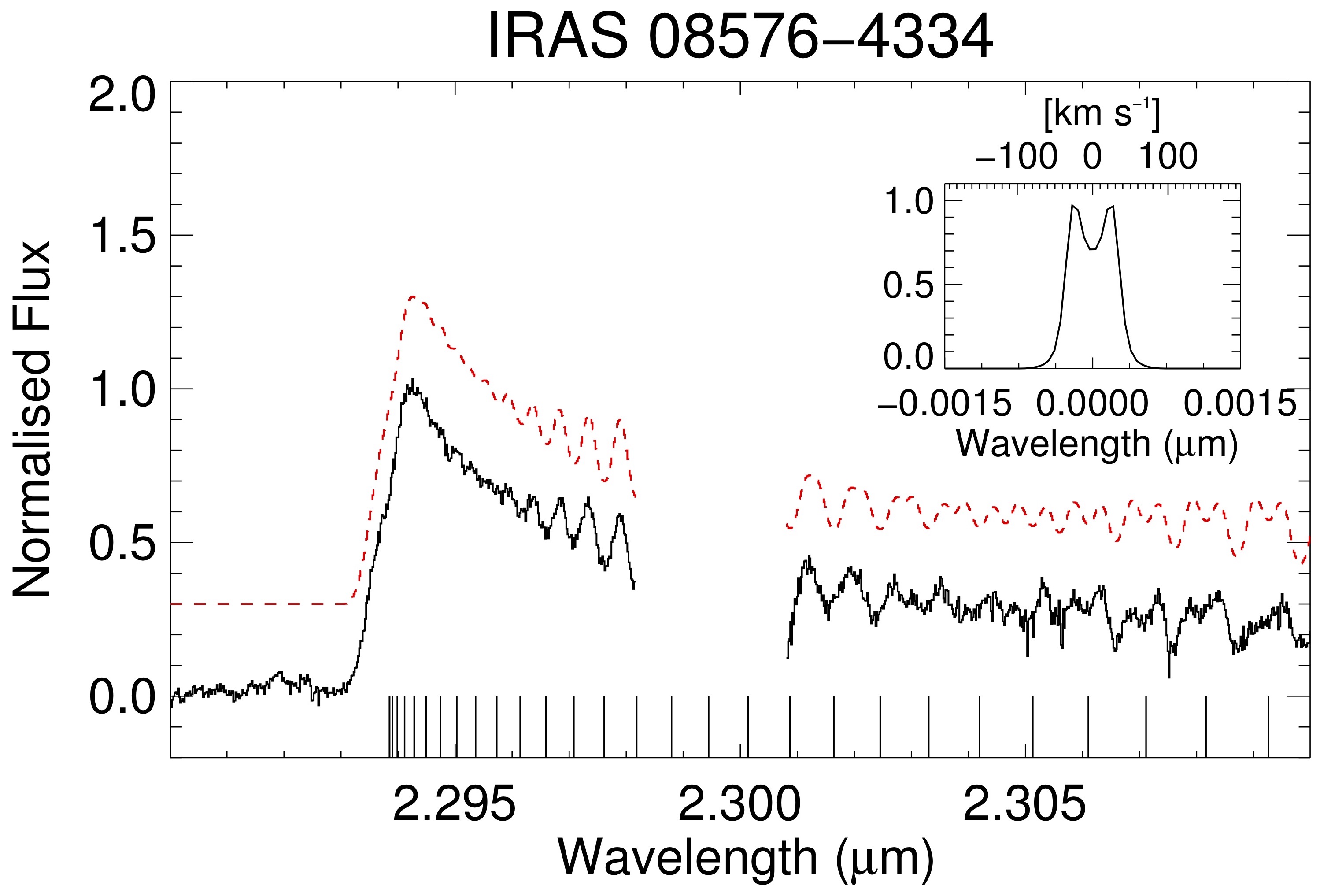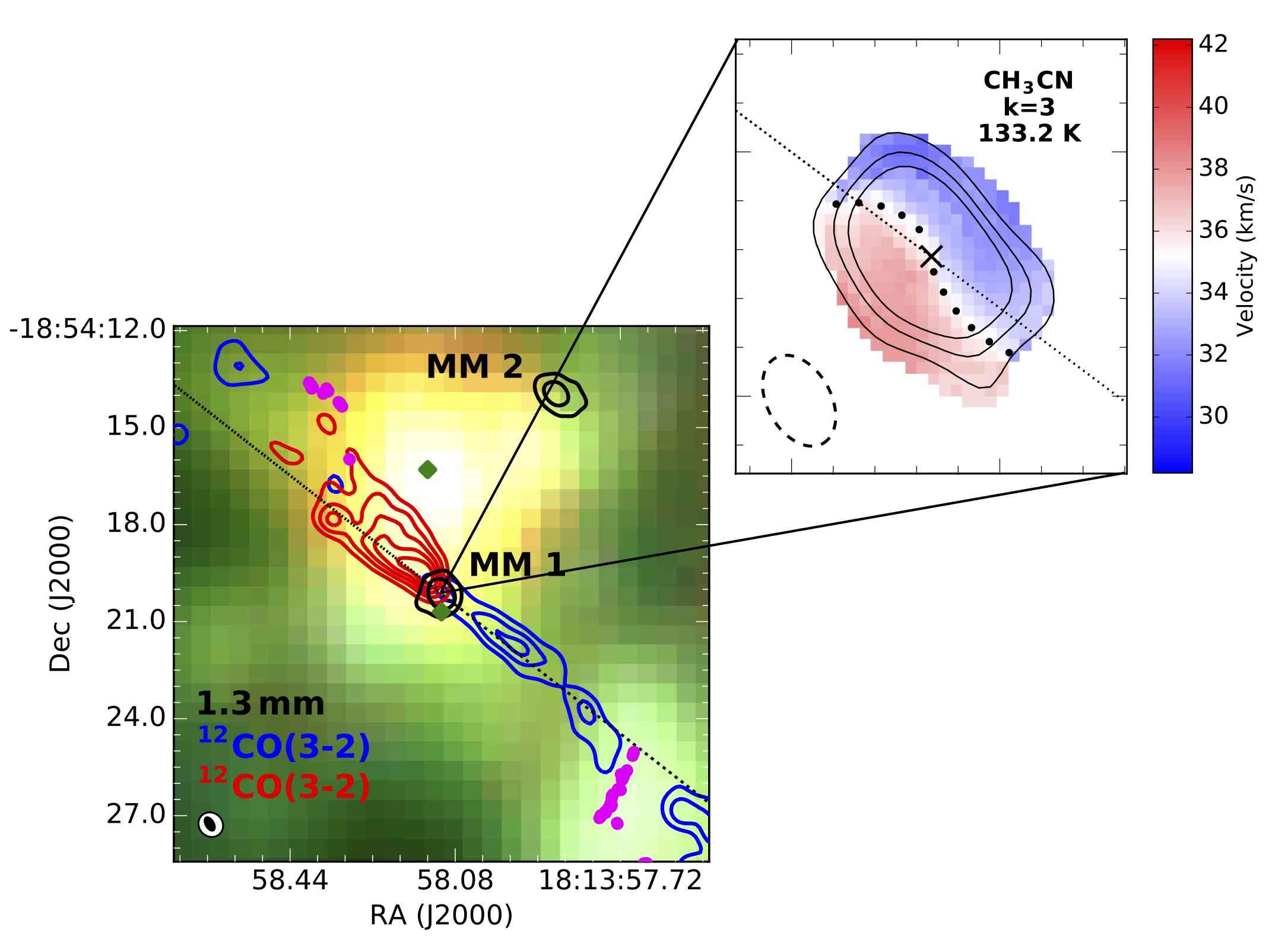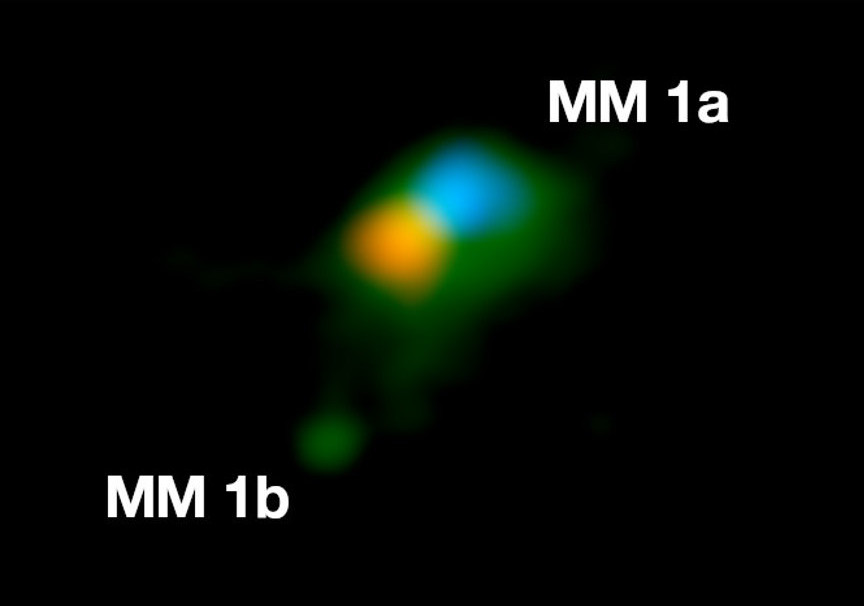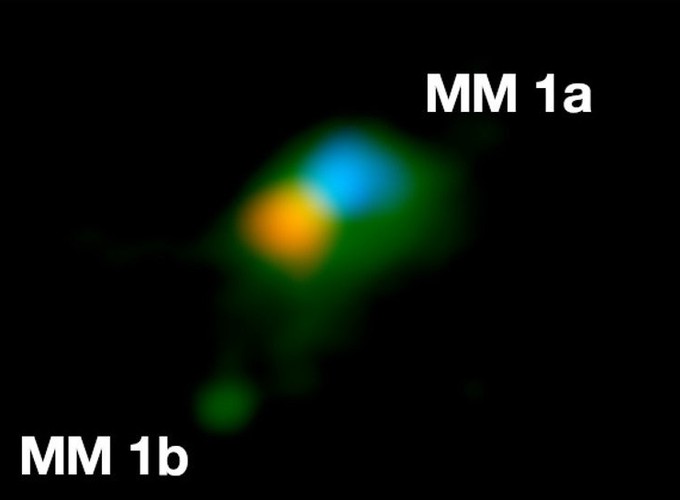Stars more massive than our Sun are difficult to image directly during their early stages of formation, because these stages occur very rapidly. This means the entire formation period occurs while the star is still shrouded in the parent cloud that formed it. Due to this, and the fact that most massive young stars are located far from Earth, we know very little about how massive stars form.
However, we can look at these massive young stellar objects (or MYSOs) using infrared wavelengths of light, which are able to penetrate the thick cloud surrounding them. Using a very high resolution spectrograph (CRIRES) mounted on the Very Large Telescope (VLT), I examined emission from the CO molecule that is excited in very warm and dense gas, the type of environment we expect very close to the forming massive star. Modelling this CO ‘bandhead’ emission shows us that this warm gas is emitted from small discs, suggesting massive stars form in a similar way to their low-mass counterparts. Excitingly, this work was discussed in a review talk at on massive star formation at Protostars & Planets VI.

Figure 1: CO overtone emission toward IRAS 08576-4334 overlaid with the au-scale disc model (Ilee et al. 2013)
By going to even longer wavelengths, it is possible to investigate the colder material surrounding these massive young stars, which makes up the majority of the mass. Using the Submillimetre Array (SMA) in Hawaii, we were able to investigate the immediate enviroment of a particular massive young star - G11.92-0.61 MM1.
Using the emission of CH3CN - methyl cyanide - we were able to examine the gas close to the centre of this young protostar. I found that it was rotating in a Keplerian manner (that is, similar to the planets in our Solar System, and also discs around lower mass stars). We were then able to calculate the mass enclosed by the disc, which was between 30 and 60 times the mass of our Sun. By looking more closely at the dust emission, we were able to calculate that the disc is likely 2-3 times as massive as our Sun. Thus, if the remaining mass is entirely due to the central object, then G11.92-0.61 MM1 is one of the most massive protostars discovered to-date.

Figure 2: SMA observations of G11.91-0.61 MM1 showing the bipolar molecular outflow, and the gas velocity from the CH3CN K=3 transition, consistent with infall and a rotating Keplerian disc (Ilee et al. 2016).
Such an extreme system begs the question - what would the disc look like? While we couldn’t resolved the disc directly with our SMA data, we were able to model it. Using our observations as a basis, we could assess how likely it would be for this disc to fragment into smaller objects, along with a handful of other recently observed discs around massive stars. Therefore, MM1 should be a good target for observing substructure and possible companion formation around high mass young stars.
Based on this, I targeted the G11.92 MM1 system with the ALMA in Cycle 4. ALMA allowed us to observe MM1 in much greater detail than with the SMA, and image the close circumstellar environment for the first time. The observations revealed a wealth of detail in the system. MM1 divides into two main sources, MM1a and MM1b. MM1a weighs in at approximately 40 times the mass of our Sun, and appears to be the source of the large-scale bipolar outflow. It is surrounded by a rotating Keplerian disc. Just beyond the disc lies MM1b, which was measured to weigh about half the mass of our Sun. The analysis suggests MM1b is a bound object in orbit around MM1a. Based on their extreme difference in mass, and our model predictions, the MM1a & b system appears to be one of the first observed examples of binary star formation via disc fragmentation around a massive young star. I will be targeting MM1a & b with the most extended configurations of ALMA in 2019 in order to further characterise these exciting objects.

Figure 3: ALMA observations of G11.91-0.61 including the main source MM1a and the disc fragment MM1b (Ilee et al. 2018b).
